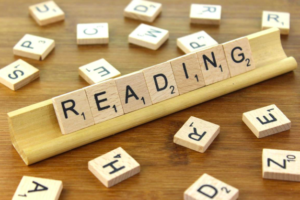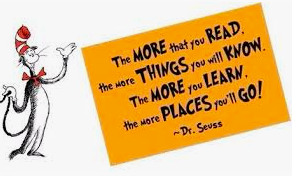Reading Hacks for Study Success
Reading is a key activity for learning, whether you are reading a novel, play, academic text, a text book or instructions from the Internet, kindle or a paper book. Often, the pages and pages of text can seem overwhelming. The great news is there are many ways to read different types of text. Fiction and nonfiction may be read in differing ways for best comprehension and understanding. One important concept is that it is okay to read the information a few times to understand. There are differing speeds of reading, depending on the purpose of your reading. As a speed reader myself, people are often amazed that I still read a text two to three times, or more! (I can now actually read a text three times and it is still faster than my speed reading it once, prior to learning to speed read.) I often read it firstly at a fast rate as an overview, to alert my brain to the information and key words. The second reading is usually at my slower comprehension rate. If I still need clarity, or am unsure about what I have read, I may read it again, perhaps at an even faster rate as I look for more clarity.
If reading often seems a struggle or a chore, give some of these hacks a whirl and see how you go.
Reading Fiction:
- Chunk it Down: Read small sections at a time. You may choose to read one to two pages or one chapter at a time. Do what is manageable.
- Set a Timer: Read for a certain time and either make notes or take a break.
- Reading for Meaning, Not Memorisation: This means you do not have to read every word. Words such as the, in, a, is are used for grammatical sense, and are not usually required for
- Make Notes: If you know you are going to be asked about the plot, setting, characters, etc., create a mind map or list of ideas as you go or at the end of a section of reading.
- Listen to the Audio Book: If reading is a challenge, download the audio book and listen while you are walking, cycling, riding public transport or doing mundane jobs such as hanging out the washing or washing the car. You might be amazed at how much you take in from an audio book. I have a huge library of them on my phone and play them while I’m driving.
- Avoid the Movie Version: Most movie cuts of a novel are condensed down, changed and do not have the same impact as the book. The book will go into far more detail which you are likely to need for an essay or exam.
Reading Nonfiction:
- Create Interest:
 By scanning the contents and index pages, you can quickly create an interest in the text. This will give you an overview of what you are going to read and you can even dive straight into the interesting parts first. You do not usually have to read the information in order.
By scanning the contents and index pages, you can quickly create an interest in the text. This will give you an overview of what you are going to read and you can even dive straight into the interesting parts first. You do not usually have to read the information in order. - Read the ‘About the Author’ and the ‘Acknowledgements:’ Reading these sections give you a sense of the author’s background and perspective.
- Find a reason to Read the Information: Maybe it is a question you have been asked, or you are looking for certain information. You do not have to read everything when reading an academic text.
- Chunk it Down. Nonfiction is often written in sections with headings and subheadings. Break your reading down per section or subheadings.
- Pay Attention to Photos and Diagrams: These are in the text for a reason and often are an important source of information. Ensure you read the captions under the photographs as these also help with comprehension.
- Record Yourself Reading the Text: Listen to it while you are walking, exercising, waiting, etc.
- Skim and Scan: Glance through the text for the information you are looking for. You do not have to read every word. Pay attention to words in bold or italics as these will be important.
- Link New Material: Consider how the new material relates to your past knowledge. Think about what you already know and link these ideas to what you are reading.
General Tips
- Know why you are reading. Before you begin, make sure you have identified the purpose for reading and what you need to achieve. Having a purpose creates a reason for the brain to search and find information. This also helps you use your time wisely.
- Take notes. Use a highlighter or a pencil in the margin to underline or mark key ideas and information.
- Stop at unfamiliar words. If you are unsure of a word, pause and take time to find out what it means. Missing it out and carrying on often causes your understanding to decrease as your brain is attempting to work out what the word means.
- Use good posture. Read sitting up with your feet flat on the floor. Your good posture will help your brain concentrate.
- Change your environment. Some people prefer silence when reading, some like background noise. Test out reading in the library, a café or a maybe out in nature. Some students sit on their trampoline or walk slowly (on a safe and known path or corridor) while reading. Maybe you might prefer to be sitting in a rocking chair. If you use music in the background, it is best to have music without words as reading and listening to two sets of words can be confusing for the brain.
- Care for tired eyes. If you find your eyes getting sore, rub your hands together quickly to create friction and heat. Once hot, cup your hands over your eyes and let the heat soak in.
- Always note where information and ideas come from. Record details of the author, title, place of publication, publisher and date so that you can find the text again if necessary. Remember to also record web page references and book page numbers with any notes you take.
- Watch for key words. Look for words like “causes,” “results,” “effects,” etc., and do not overlook signal words such as those suggesting controversy (“versus”, “pros and cons”), which indicate that the author is planning to present both sides of an argument.
Like any skill, the more you practice the better you get. Reading is the same. If you find it challenging, take your time. Set some achievable goals and start early, well before the due date. Remember to reward yourself when you have achieved your goals. Happy reading.

To find out more about Karen’s speed reading courses or to host one in your school or community, please email info@spectrumeducation.com.
Tags: Karen Tui Boyes, reading, reading hacks, speed reading, Study Skills
Published on Monday, April 29th, 2019, under Learning, Study Skills, Success

I read your article. It is really gives pleasure while reading.
Regards,
Samprasad
Thank you Karen, this article is helpful. By breaking study hacks into text categories, you have highlighted the differences in purpose and text structures.
Most of us read ‘automatically’ unless the vocabulary and context are new to us so by highlighting the differences, you have attuned the reader to search deeper and measure new ideas with prior knowledge. Oh, and bullet points are so easy to read!
Great work.